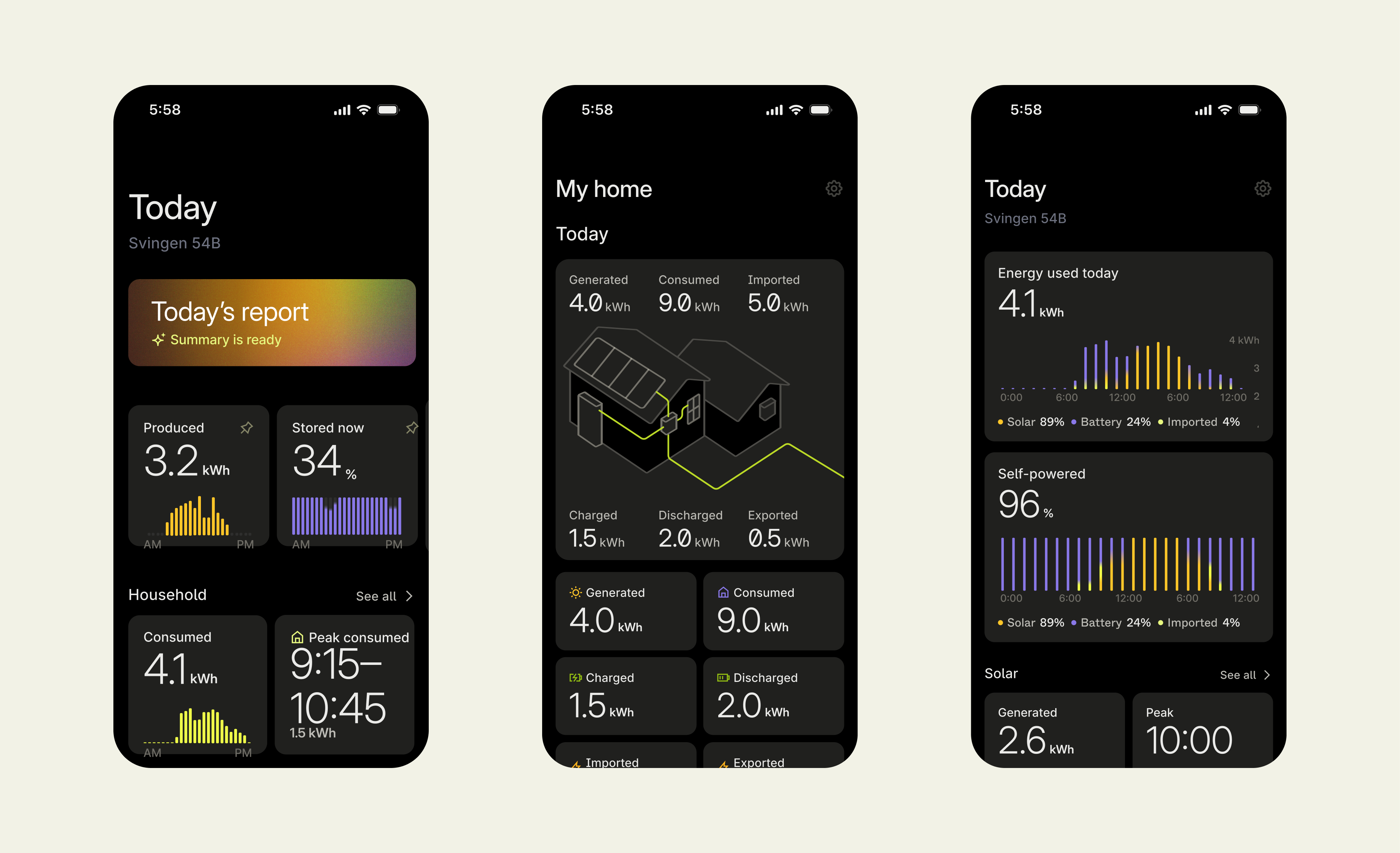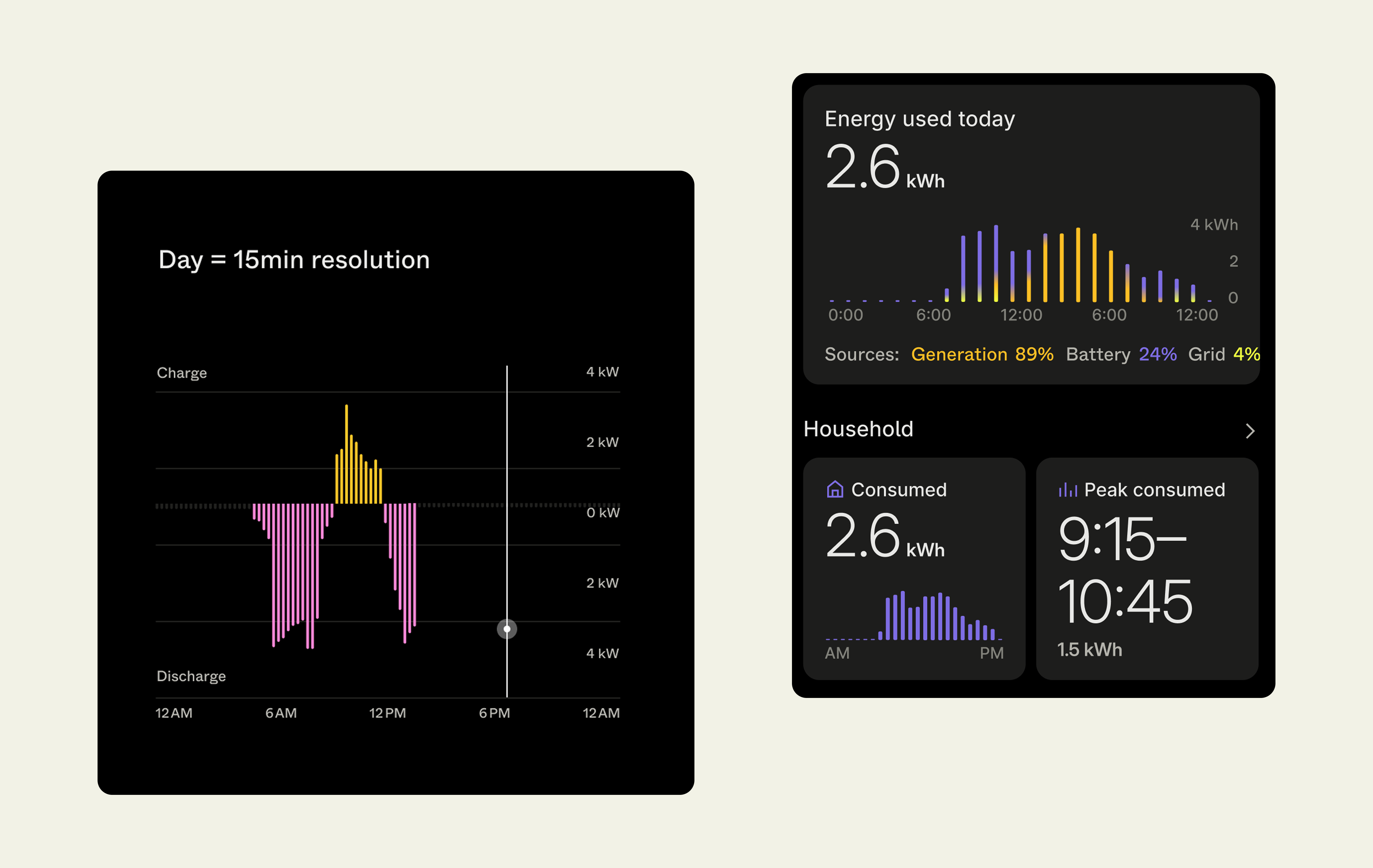Introducing the HEM System: a unified API for solar and home batteries

Across the globe, home energy management systems are evolving fast.
Solar panels are becoming a standard feature on many homes. Batteries are becoming popular additions to Solar panels as net metering is phased out, self-consumption is increasing its value and storage prices per kwh have fallen significantly in recent years, making batteries an increasingly attractive investment. For many households, that means their home has quietly become a small power plant: generating, storing, and consuming energy in ways that weren’t possible a few years ago.
But as homes get smarter, they’re also getting more complex. Each inverter, battery, and meter reports its own version of the truth. Consumers are left piecing together numbers that never quite match, while manufacturers and energy retailers field questions they shouldn’t have to answer.
We built the HEM System to change that.
Making home energy understandable
The rise of solar and batteries, bi-directional energy flows, and dynamic tariffs have created new needs for residential households: How can energy cost be reduced by optimizing how energy flows behind the meter? How can the return on investment for energy devices be maximized?.
Answering these questions requires looking beyond the individual device. Households don’t think in devices; they think in energy bills. They want to understand their home’s overall performance, not just what each device did. But as devices become more interconnected, from inverters and batteries to smart meters, it’s increasingly hard to get a full picture by looking at them in isolation.
The HEM System brings the household’s key energy devices together in one synchronized view. It turns raw device data into clear, reliable insights that anyone can understand.
Instead of comparing readings from multiple individual devices, consumers can finally see:
- How much solar energy was produced today
- How much the battery charged and discharged
- How much energy was imported/exported from/to the grid
- How much energy their home has consumed and how much of that was powered by their own production

Until now, this has been difficult to achieve. Even when households or developers try to calculate these energy flows themselves, data from different devices rarely lines up perfectly. Small differences in timing, sampling, and system losses can make the results diverge from what manufacturers show in their own apps.
By using the data points directly from the manufacturer, the unified HEM System API aligns with their own insights, improving accuracy and helping households build trust in what they see.
With that clarity, households can make informed decisions, when to charge, when to consume, when to store, without calling a support line or guessing which number to trust.
As Frederik Lölhöffel, Product Manager for Home Energy, explains:
“The HEM System turns complexity into clarity. Reliable, synchronized energy data is the foundation for everything else, from understanding self-reliance to optimizing for tariffs or enabling flexibility.”
Built together with our partners
The HEM System isn’t a standalone product. It’s the result of close collaboration with the manufacturers and energy retailers building the next generation of home energy services. Over the summer, multiple manufacturers and energy retailers joined our early adopter program. Their input shaped how the HEM System handles data, which statistics matter most, and how experiences should look.
“With the HEM System, we can finally give our customers a clear picture of how their home energy system is performing without having to piece together data from different devices,” says Ensol. “Being part of the early adopter program meant we could shape the HEM System from the start, and it’s now a core part of how we deliver clear, reliable insights to our customers.”
Their feedback has already made its way into the product: better synchronization between assets, clearer statistics, and an approach to data that matches what end-users see in their manufacturer apps.

And this is only the beginning. As more manufacturers and retailers join, the HEM System will continue to evolve into the shared foundation for how household energy data is understood and acted upon.
From insight to action
The HEM System lays the groundwork for what comes next: optimization, automation, and flexibility. Technically, it mirrors how many manufacturers organize their own data at the ‘plant’ or ‘site’ level, where energy flows like solar generation, household consumption, and battery charge or discharge come together. We’ve introduced a new API entity at this level, making it easier to access and act on household-level data through Enode’s unified API. Behind the scenes, our partnerships with leading battery and inverter manufacturers are expanding quickly. Each new integration means more households can benefit from this consistency and more companies can build on a shared foundation.
What’s next
The HEM System beta is live today. The initial release focuses on insights, giving households a trustworthy view of how energy flows around their solar and home storage systems under a common manufacturer account. Over time, we’ll look into expanding into additional asset types, like electric vehicles and EV chargers, and also handling systems of mixed manufacturers, to bring even more partners into the ecosystem.
The HEM System API gives easy access to data on how energy flows through a household. This data enables:
- crafting of beautiful end-user experiences
- behind-the-meter optimizations to reduce energy cost
- In front of meter optimizations via flexibility opportunities to further generate value
For manufacturers and energy retailers, it’s a simple way to give consumers the visibility they’ve been asking for. And for households, it’s a step toward a future where every home energy system just makes sense.
Interested in joining the HEM System beta?
👉 You can request access through our developer support portal.
